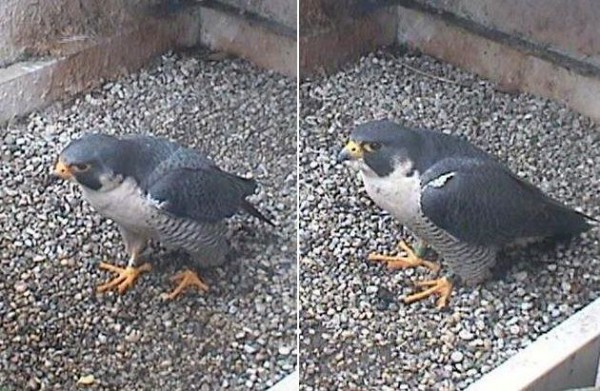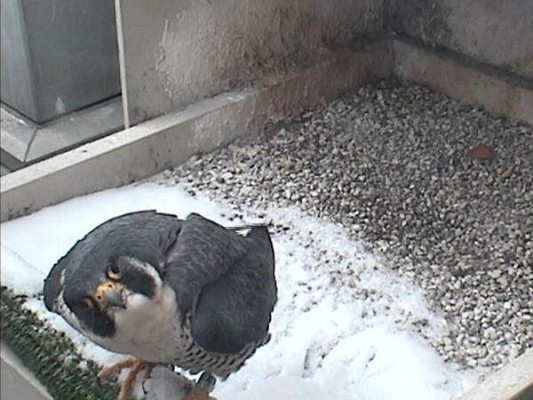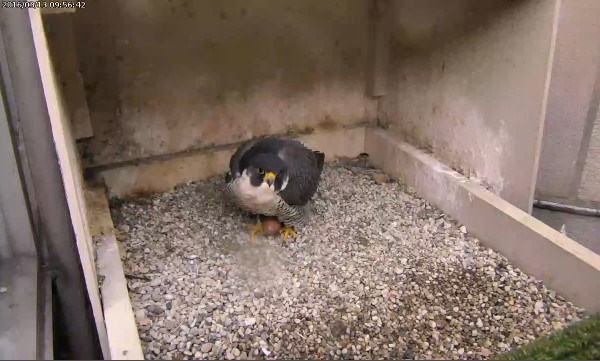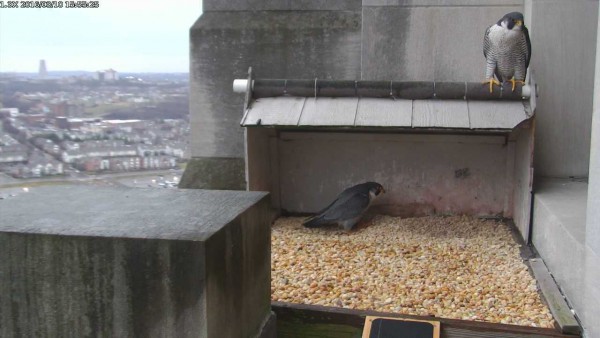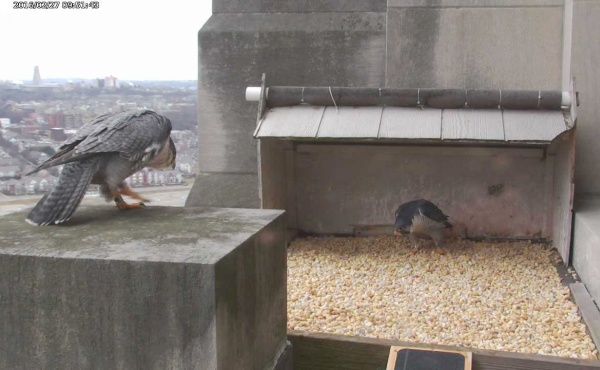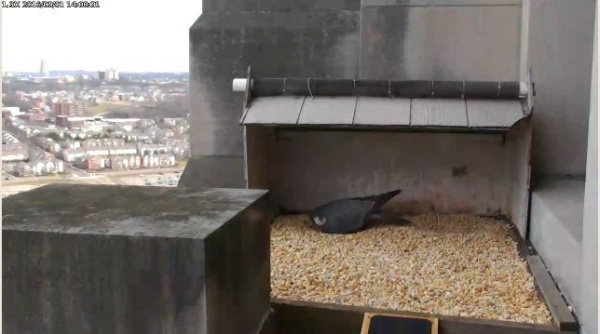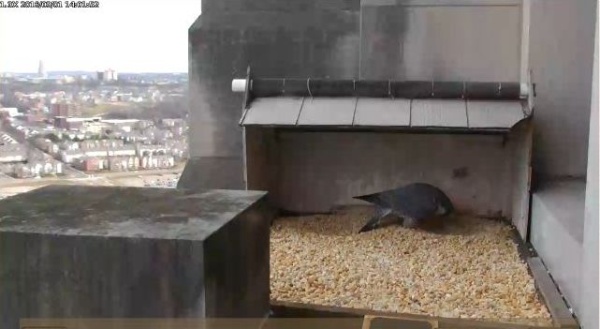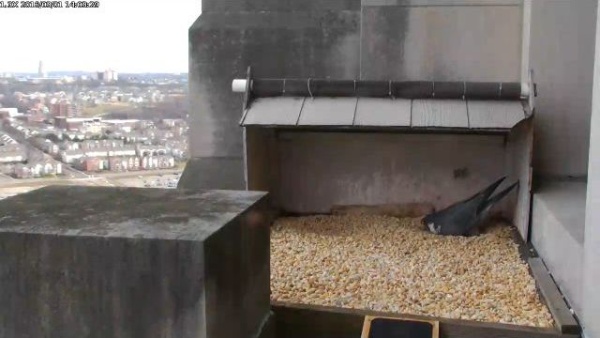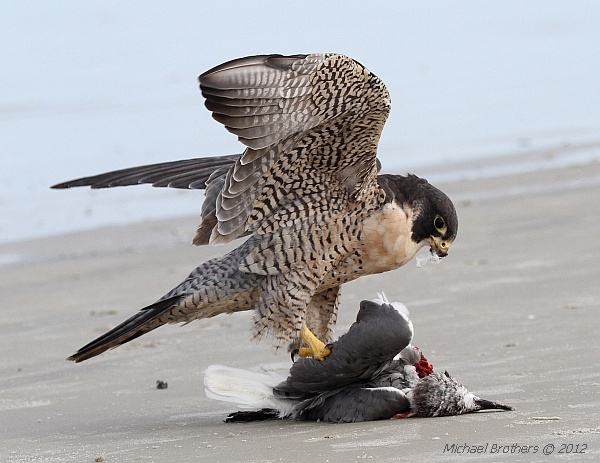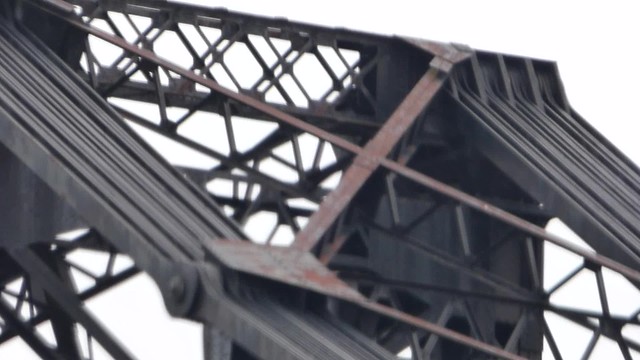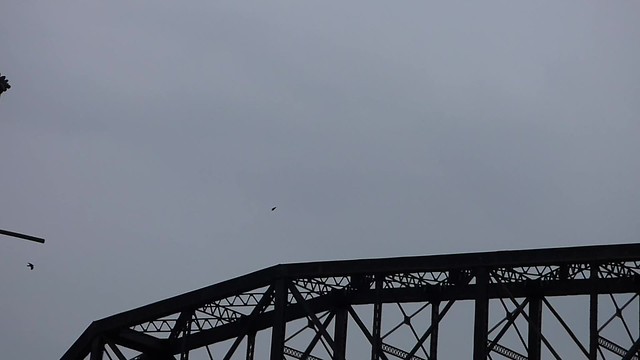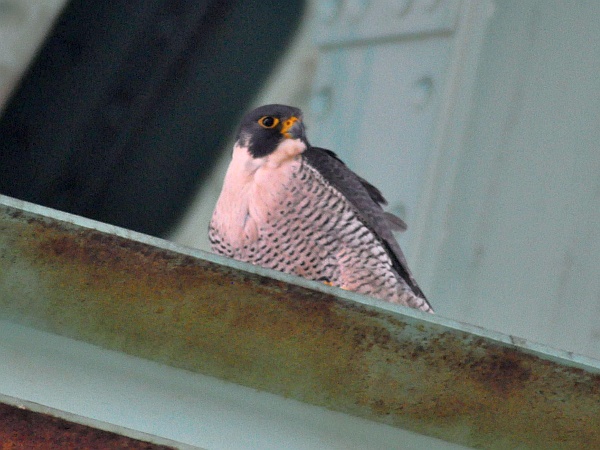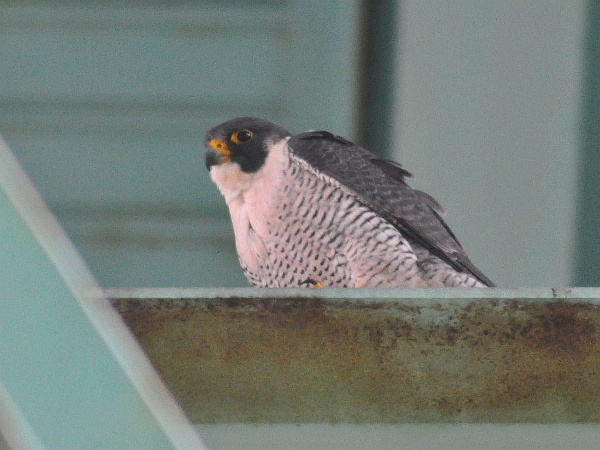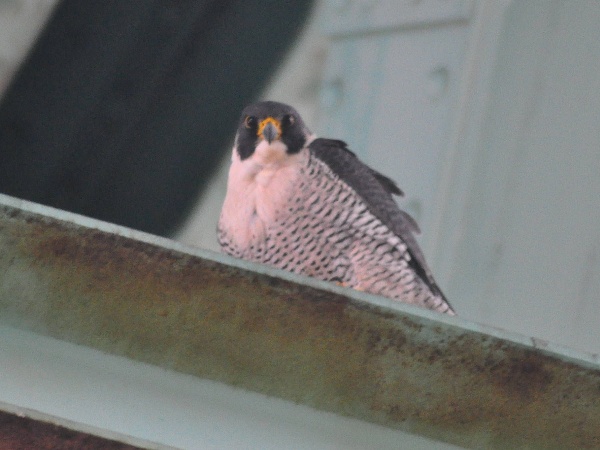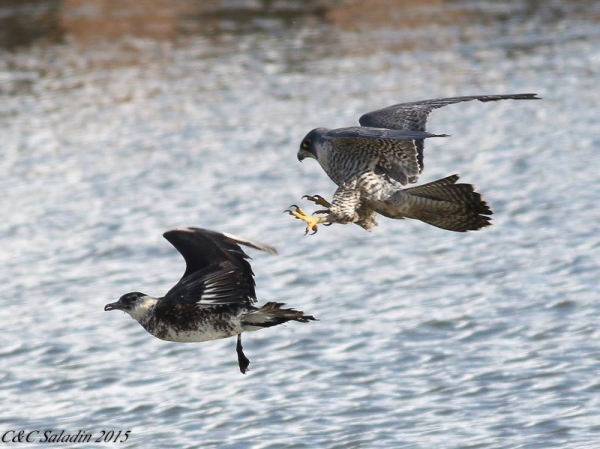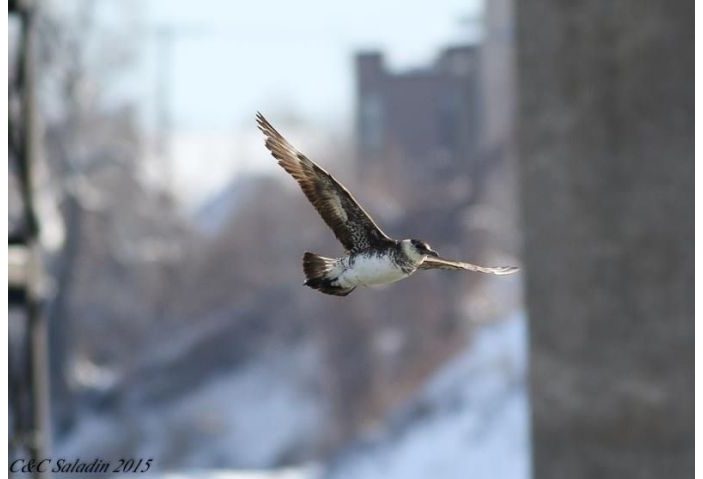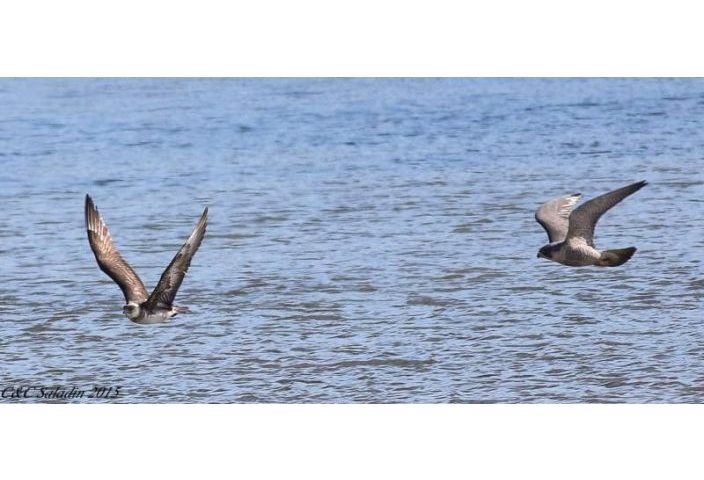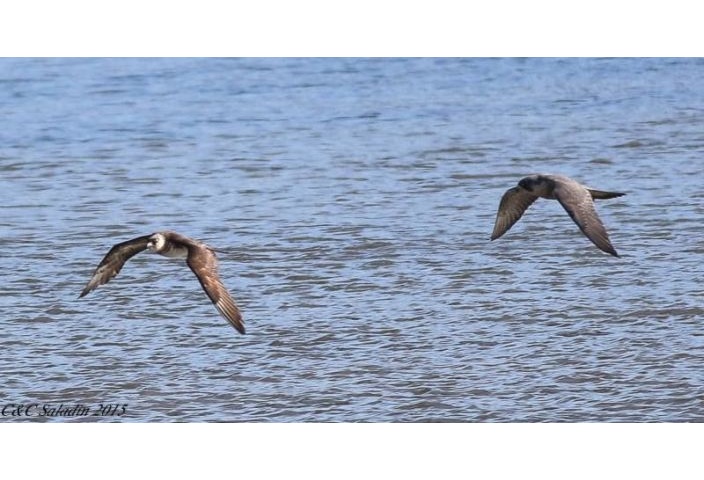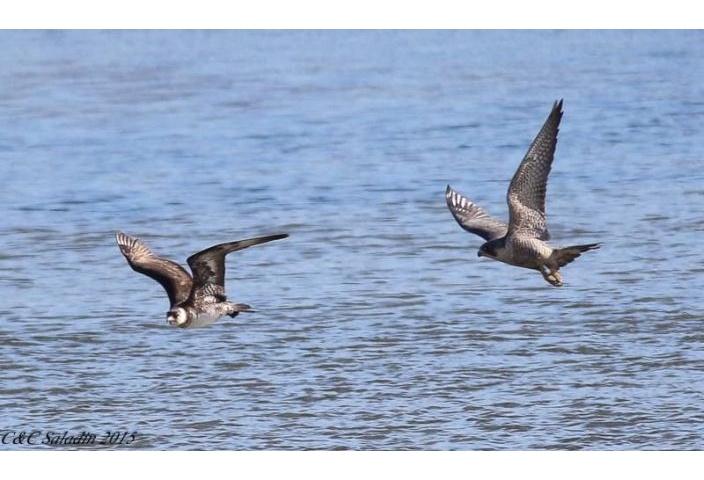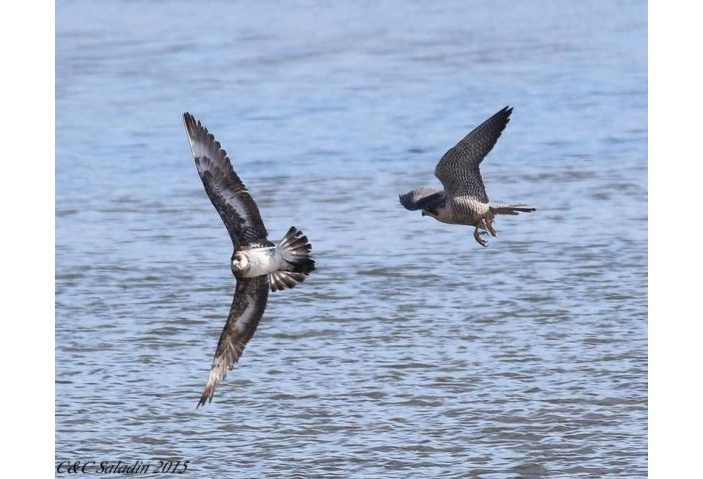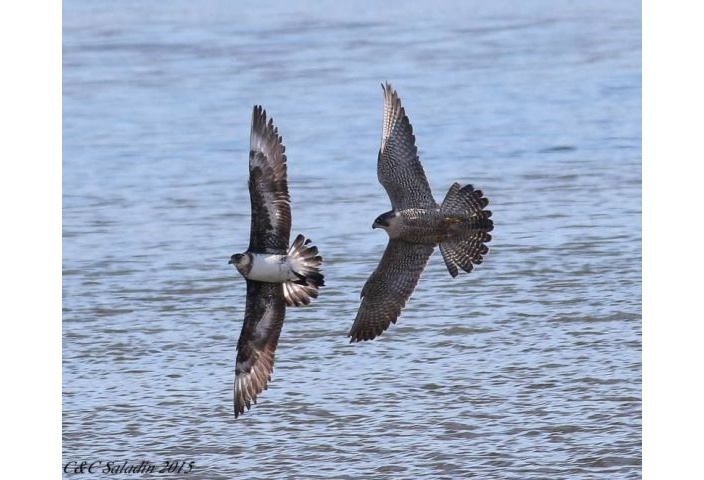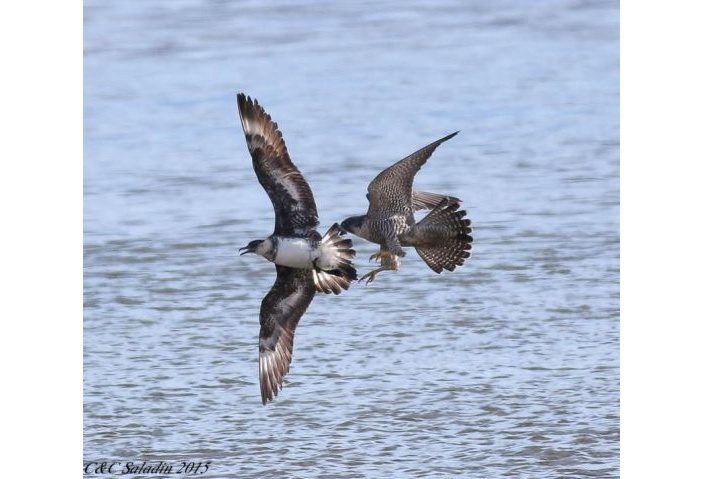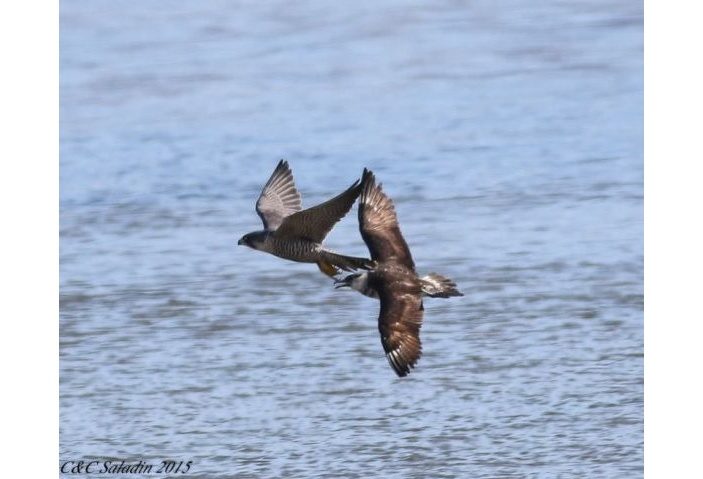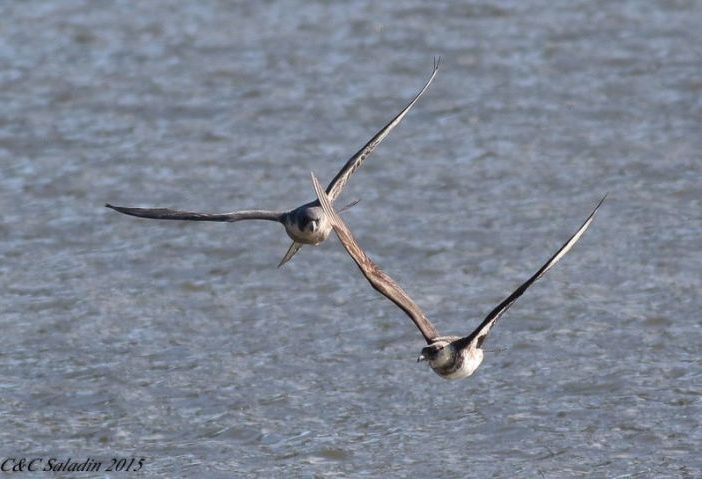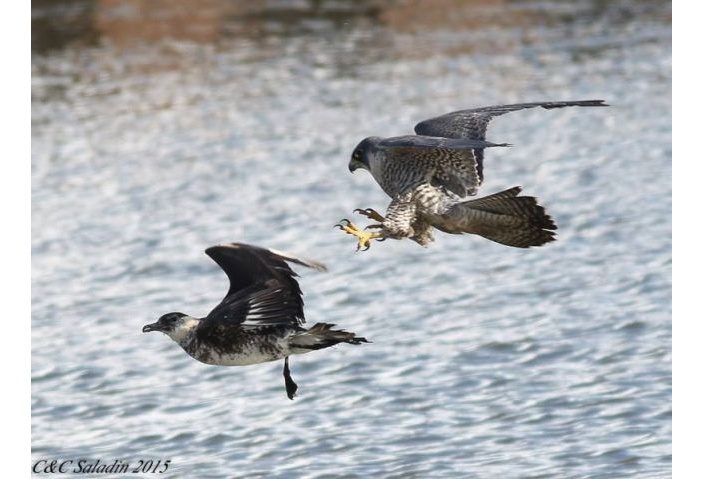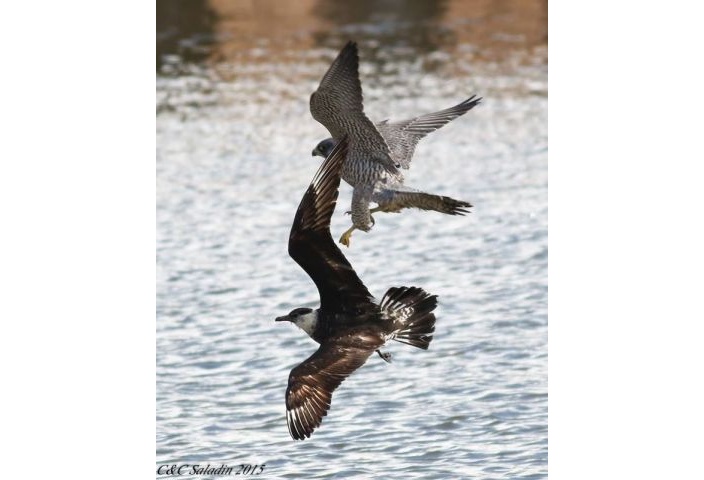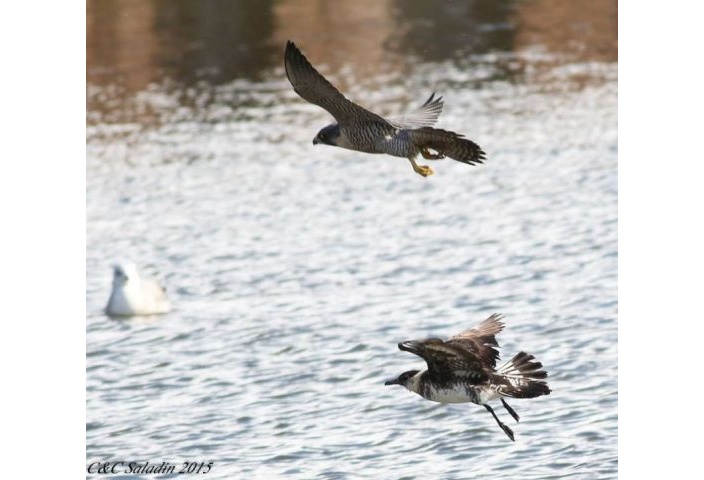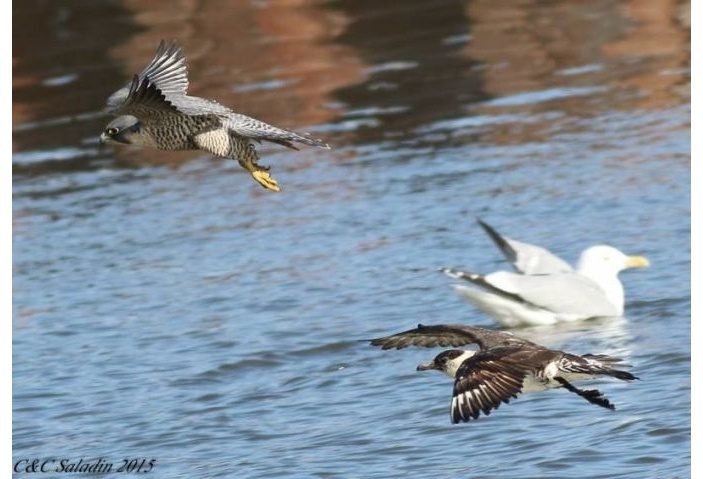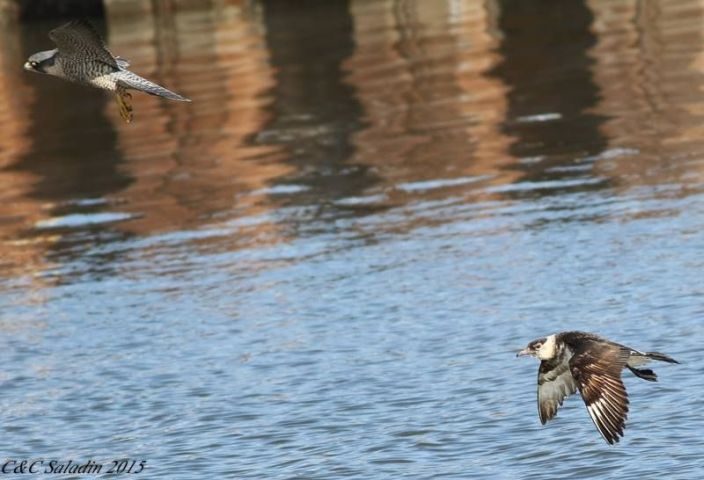
Sad news of the Cathedral of Learning peregrines at the University of Pittsburgh:
Yesterday afternoon, March 16, a woman in the Friendship neighborhood of Pittsburgh found a dead peregrine falcon face down in her backyard. Because he was banded we learned he was E2.
E2 hatched at the Gulf Tower in 2005, the son of Louie and Tasha. He arrived at Pitt in November 2007 after his predecessor Erie had disappeared. He was 11 years old.
Last seen on the Cathedral of Learning falconcam at 12:37pm on Tuesday, March 15, E2 died less than a mile and a half from home. He had a broken right wing and leg and blood in his mouth. We don’t know what happened but it appears he was hit broadside. (*)
When E2 last visited the nest there was only one egg (photo below shows his bands). Hope laid her second egg 4.5 hours later. Though she sometimes sits on the eggs, she may have not begun true incubation.

At this point in the nesting cycle — egg laying — E2 brought food to her every day, mated with her, and cached food on the cliff. His custom was to visit each egg after it was laid. He did not visit the second egg.
By now Hope has figured out that he won’t be coming home.
Hope will begin to hunt for herself again. For a while, she’ll protect the eggs but not incubate them. Eventually she’ll advertise for a mate by circling above the Cathedral of Learning. If a new mate arrives in the next few weeks, the pair will bond and she will lay a new clutch two weeks later.(**)
There is no time to be sad. Peregrines don’t grieve, especially in March when their hormones are driving them to reproduce. Between now and September they must defend a territory, mate, lay eggs, and raise young to self sufficiency. There is still time for Hope to raise a family if she finds a mate soon.
Goodbye, E2. I’m sad and unhappy about your untimely death but I know there’s no time to grieve.
My greatest wish right now is that Hope will find a new mate really soon.
We will watch and wait.
(photo of E2 at top by Peter Bell. Last photo of E2 from the National Aviary falconcam at Univ. of Pittsburgh)
(*) When a peregrine swoops low over the street he can be hit by a vehicle. There are many reasons for swooping low including pursuit of prey and chasing an intruder.
(**) There is precedent in Pittsburgh for re-clutching with a new mate. Read about the Gulf Tower in 2010.
Many thanks to Art McMorris and Bob Mulvihill for keeping me informed while I’m traveling. And special thanks to Caitlin for reporting E2’s bands.
